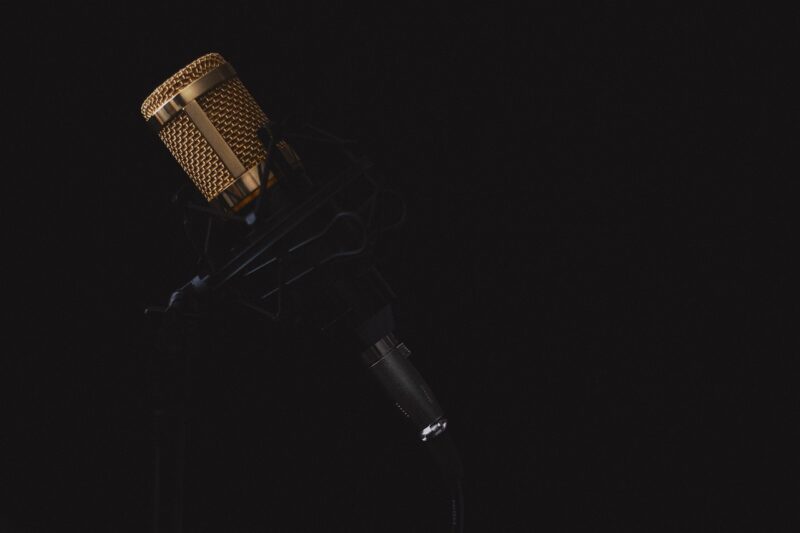
In the digital age, creating and sharing audio content has become increasingly popular. Whether you’re considering starting your own podcast or recording an audiobook, having clear, high-quality audio is essential for engaging your listeners. In this comprehensive guide, we will explore the fundamentals of recording your voice, providing tips, tools, and techniques to help you produce professional-sounding audio content.
1. Understanding the Importance of Audio Quality
Audio quality can make or break your podcast or audiobook. Poor audio can lead to listener fatigue and disinterest, while high-quality sound enhances the overall experience. Here are a few reasons why audio quality is paramount:
- Listener Retention: People are more likely to continue listening if they can hear you clearly. Background noise or poor sound can drive them away.
- Professionalism: High-quality audio sets you apart as a serious content creator, which can help attract more listeners or customers.
- Clarity of Message: Good sound ensures that every word is understood, which is crucial in delivering your message effectively.
Investing time and resources in high-quality recording equipment and techniques can significantly enhance the listening experience.
2. Essential Equipment for Recording
Before you start recording, it’s essential to have the right equipment. Here’s a breakdown of the fundamental tools you’ll need:
- Microphone: The most critical piece of equipment. USB microphones are great for beginners due to their ease of use. However, XLR microphones offer higher audio quality and are worth considering as you grow.
- Recommendations: Blue Yeti (USB), Audio-Technica AT2020 (XLR).
- Audio Interface: If you opt for an XLR microphone, you’ll need an audio interface that connects your microphone to your computer. Popular options include Focusrite Scarlett and PreSonus AudioBox.
- Pop Filter: This helps reduce plosive sounds (like ‘p’ and ‘b’) that can cause distortion in recordings. They are inexpensive and easy to use.
- Headphones: Closed-back headphones allow you to listen to your recordings without any sound bleeding, providing a better monitoring experience.
- Recording Software (DAW): You’ll need a digital audio workstation to record and edit your voice. Options include Audacity (free), GarageBand (Mac), and Adobe Audition (paid).
Having the right tools at your disposal will pave the way for a smoother recording experience.
3. Setting Up Your Recording Space
A quiet, controlled recording environment is crucial for high-quality audio. Here are some tips for creating an ideal recording space:
- Choose a Quiet Room: Select a space with minimal background noise. Avoid rooms facing busy streets or that have loud appliances.
- Soundproofing: Use heavy curtains, carpets, and soft furniture to dampen sound. You can also use foam sound panels to absorb echoes and prevent sound reflections.
- Positioning of Microphone: Place your microphone at a height that allows you to speak directly into it comfortably. Make sure it’s at least a few inches away to avoid clipping when you speak loudly.
By taking these steps, you can create a sound-friendly environment that enhances the quality of your recordings.
4. Podcast and Audiobook Recording Techniques
Once your equipment is set up and your recording space is prepared, it’s time to delve into the recording process. Here are some techniques to ensure that you record effectively:
- Warm Up Your Voice: Just like any physical activity, warming up your voice is essential. Try humming or doing vocal exercises to get your vocal cords ready before you start recording.
- Monitor your Audio Levels: While recording, keep an eye on the audio levels to avoid distortion. Aim for peaks around -6dB to -3dB to ensure that the sound is clear without clipping.
- Speak Clearly and at a Consistent Volume: Maintain a steady speaking pace, and project your voice to ensure clarity throughout the recording.
- Avoid Over-editing: While editing is necessary, overdoing it can lead to unnatural audio. Keep the flow of your speech intact — it’s okay to have slight imperfections!
These techniques will not only help preserve audio quality but also create a more engaging listening experience for your audience.
5. Editing Your Recordings
After recording your audio, the editing process is essential for polishing your content. Here’s how to edit effectively:
- Trim Unwanted Sections: Remove any long pauses, mistakes, or irrelevant tangents that may distract listeners. Keeping your content concise will retain engagement.
- Add Music and Sound Effects: Consider incorporating background music or sound effects to enhance your podcast or audiobook. Be sure to use royalty-free options or create your own.
- Balance Audio Levels: Ensure that all segments of your recording are at a consistent volume. You want your audience to have a smooth listening experience without volume fluctuations.
- Export in the Right Format: Export your final audio in a widely used format such as MP3 or WAV for easy playback and sharing on various platforms.
Editing plays a crucial role in achieving a professional-sounding final product, and it can significantly enhance the quality of your podcast or audiobook.
6. Delivering Your Content to Your Audience
Once you’ve recorded and edited your audio, you’re ready to share it with the world. Consider these distribution tips:
- Choose a Hosting Platform: Select a podcast hosting platform that suits your needs. Popular choices include Libsyn, Podbean, and Anchor, which make it easy to distribute your content across platforms.
- Promote Your Content: Use social media, newsletters, and your website to promote your podcast or audiobook. Engage with your audience and encourage them to share your content.
- Gather Feedback: Encourage listeners to provide feedback through reviews or comments. Constructive criticism can help you improve your content for future episodes.
Sharing your content effectively will help you build an audience and establish yourself as a knowledgeable voice in your chosen topic.
Conclusion
Recording your voice for a podcast or audiobook is an exciting venture that allows you to share your thoughts, expertise, or creativity with the world. By understanding the importance of audio quality, investing in the right equipment, creating a conducive recording environment, and employing effective recording techniques, you can produce audio content that captivates your listeners.
Whether you’re a beginner or looking to improve your existing skills, these fundamentals will set you on the path to success as a voice recorder. With practice and persistence, you’ll be well on your way to becoming a respected voice in the podcasting or audiobook community.






